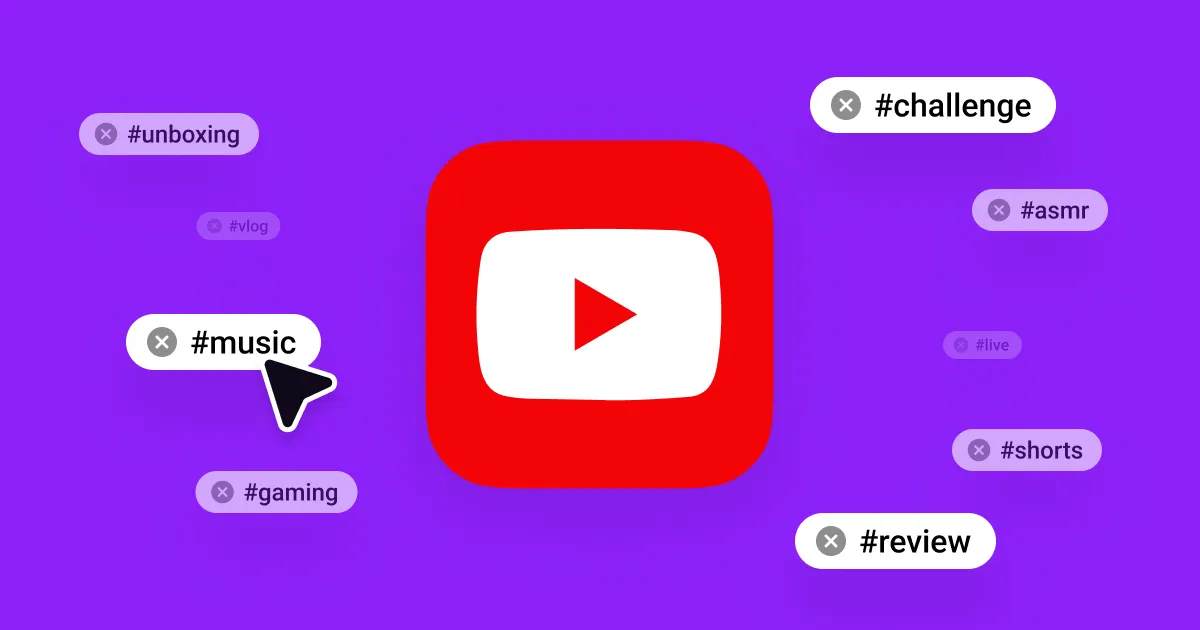🎯 Tags on YouTube: Do They Still Matter in 2025?


Category: Platform
Published on July 28, 2025
If you’ve ever uploaded a video to YouTube, you’ve probably paused at that “Tags” section and wondered—Do I really need to fill this out? And in 2025, with AI algorithms smarter than ever, you’re not alone in asking: “Do tags still matter?”
In this article, we’ll clear up the confusion. We’ll debunk myths, look at YouTube’s official stance, explore how tags really affect discoverability today, and share practical tagging strategies that work with the 2025 algorithm—not against it.
Tags on YouTube are keywords or phrases you enter while uploading a video. Their original purpose? To help YouTube understand what your video is about—especially in case your title or description wasn’t clear.
But since 2015, YouTube has evolved dramatically. Today, it relies heavily on AI, natural language processing, and viewer behavior to understand content.
So where do tags fit into all this?
YouTube has publicly stated (multiple times) that tags are not as important for search ranking as they used to be.
From YouTube Help Docs (2024 update):
“Tags can be useful if the content of your video is commonly misspelled. Otherwise, tags play a minimal role in helping viewers find your video.”
So, in essence:
Let’s debunk some lingering myths that are still floating around in 2025:
Reality: Not anymore. YouTube’s algorithm ranks based on watch time, CTR (click-through rate), viewer retention, and metadata quality, not tags.
Reality: Irrelevant or keyword-stuffed tags can actually confuse the algorithm—or worse, trigger spam detection.
Reality: YouTube uses viewer behavior, not tags, to decide what shows up in “Suggested Videos.”
Reality: YouTube’s algorithm has moved way beyond simple keywords. Today, it's all about semantic understanding and viewer interaction.
Yes—but strategically. Think of tags as metadata support, not the main driver.
✅ Use tags to:
🚫 Don’t use tags to:
Let’s look at how tags fit into broader discoverability:
|
YouTube Element |
SEO Impact in 2025 |
Importance |
|
Title |
Very High |
⭐⭐⭐⭐⭐ |
|
Thumbnail |
Very High (CTR) |
⭐⭐⭐⭐⭐ |
|
Description |
High |
⭐⭐⭐⭐ |
|
Tags |
Low |
⭐⭐ |
|
Chapters & Timestamps |
Medium |
⭐⭐⭐ |
|
Captions/Transcripts |
High |
⭐⭐⭐⭐ |
As you can see, tags aren’t totally obsolete, but they’re supporting actors, not the star of your YouTube SEO show.
Here’s how to make the most of YouTube tags—even if their influence is minor:
Always lead with your main keyword. Example: For a video titled “How to Bake Chocolate Chip Cookies”, your first tag might be:
Include common typos or alternate forms:
These help associate your videos together.
Avoid spammy tactics like:
Hashtags like #fitness or #travel appear above your video title. These are clickable, help in categorization, and are visible to viewers.
Tags, on the other hand, are hidden metadata. YouTube sees them, not your audience.
Use both—but don’t confuse them.
For new channels, every bit of metadata helps.
Even though tags won’t skyrocket your video to the top of search, they can:
So, while tags won’t “hack the algorithm,” they do no harm if used correctly.
Let’s compare two cooking channels starting in 2025:
|
Channel A |
Channel B |
|
Uses detailed descriptions, clickable thumbnails, optimized titles, and adds 10-15 relevant tags |
Uses only tags and minimal title/description |
|
1000 subs in 2 months |
40 subs in 2 months |
👉 Why Channel A won? Because tags alone don’t drive discoverability. Metadata synergy (title + description + thumbnail) matters far more.
Here’s what real YouTubers in 2025 are saying:
🧑🍳 “I still use tags just in case, but honestly, the right title and thumbnail do 90% of the heavy lifting.” – @BiteSizedBaking
🧑🎓 “Tags helped my early videos get grouped together before I had much watch time. But once I grew, I relied less on them.” – @StudyNinja
🎮 “I use tags for misspelled game names and acronyms—it helps my niche audience.” – @GameLore
Yes—but don’t stress over them.
Think of tags as the icing, not the cake. Focus your energy on:
Use 5–15 relevant, specific tags as light metadata seasoning. That’s the 2025 strategy.
To help you with smart tagging, try these:
Every time you upload a video, ask yourself:
If I removed all the tags, would my video still rank based on its title, description, and content?
If the answer is yes—you’re doing it right.
← Back to Blog